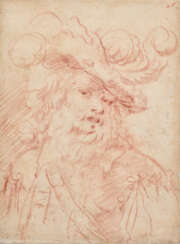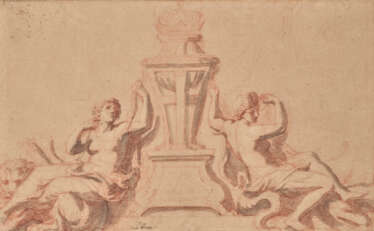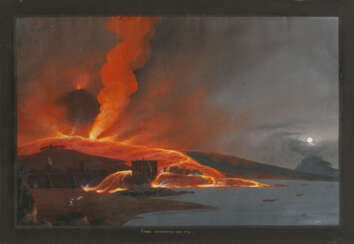
Maîtres Anciens : Peintures - Dessins - Sculptures, Online

Lodovico Carracci was a significant Italian painter and printmaker from Bologna, renowned for his contributions to Baroque art and the Bolognese school. He was a pivotal figure in reinvigorating Italian art, particularly fresco art, which had been overshadowed by the formalistic Mannerism of the late Renaissance period.
His works are distinguished by their emotional depth and spiritual intensity, often achieved through bold gestures and dramatic lighting. As an artist, he was instrumental in establishing the Carracci workshop and style, alongside his cousins Agostino and Annibale Carracci. Together, they founded an art academy in Bologna around 1585 that focused on a naturalistic approach to painting, emphasizing life drawing and a return to classical principles.
Lodovico Carracci was known for his skillful use of colour and his ability to create harmonious and balanced compositions. His works often depicted religious and mythological subjects and he was particularly famous for his frescoes, which adorned many churches and palaces in Bologna. He was also an influential teacher, with Guido Reni and Domenichino among his pupils.
Among Carracci's known works are notable religious compositions like "The Lamentation" and "Madonna and Child with Saints," which are now housed in prestigious museums such as The Metropolitan Museum of Art in New York. He also worked on significant fresco cycles in private palaces, such as the cycle depicting the story of Jason and the Argonauts in the Palazzo Fava, completed in 1584.
If you'd like to stay updated on new art-related product sales or auction events featuring works by Lodovico Carracci, consider signing up for updates to receive notifications about upcoming events and sales. This subscription is exclusively for receiving alerts on art and auction news related to Carracci's works and does not include promotional materials unrelated to art.

Giovanni Domenico Tiepolo, an Italian painter, was a remarkable figure in the 18th-century art world. The eldest surviving son of the famed Giovanni Battista Tiepolo, Domenico not only assisted his father but also carved out his own niche in the realms of painting and etching. His work, encompassing a broad array of subjects from religious themes to lively genre scenes and character sketches, reflects a blend of the allegorical grandeur inherited from his father and his own more grounded and observational approach.
Domenico Tiepolo's artistic legacy includes a significant contribution to printmaking, particularly in etching, where he reproduced both his and his father's paintings, alongside original compositions. Among these, the series of twenty-four illustrations of the "Flight into Egypt" and a set depicting the "Stations of the Cross" stand out as notable examples of his originality and skill in capturing narrative depth. His works are held in prestigious collections worldwide, such as the Prado Museum, The Art Gallery of New South Wales, and the National Gallery in London, underscoring his international acclaim and the enduring appeal of his art.
Despite being somewhat overshadowed by his father, Giovanni Domenico Tiepolo's contributions to the art world are significant. His ability to infuse his works with a sense of immediacy and emotional depth, while still engaging with the theatricality and elegance characteristic of the period, marks him as a pivotal figure in the transition from the grandiose Baroque to a more intimate and observant Rococo style. This duality is perhaps best represented in his genre scenes and character studies, which offer a glimpse into the daily life and cultural milieu of 18th-century Venice.
For collectors and experts in art and antiques, Domenico Tiepolo's works represent a fascinating intersection of historical significance and artistic merit. His prints and paintings not only reflect the cultural and artistic vibrancy of his era but also offer insights into the personal and professional dynamics within one of the most celebrated artistic families of the time.
To stay updated on sales and auction events related to Giovanni Domenico Tiepolo's works, signing up for newsletters from relevant art institutions and auction houses is recommended. These updates can provide valuable information for collectors and enthusiasts eager to enhance their collections with pieces by this distinguished artist.

Jacob Adriaensz Backer was a prolific artist of the Dutch Golden Age, known for his dynamic portraits, religious subjects, and mythological scenes. Over a span of twenty years, Backer produced approximately 140 paintings, standing out for his quick execution and attention to detail. His ability to capture intricate details like cuffs, fur, and collars within a short period was renowned, exemplifying the Dutch wet-on-wet painting technique's success during his era.
Influenced by notable figures such as Wybrand de Geest, Peter Paul Rubens, and Abraham Bloemaert, Backer was also celebrated for his drawings of nudes, showcasing his versatile skill set. His works were a testament to the baroque movement, characterized by vivid expression and intricate detail. Notable among his works are portraits that convey the subject's essence with exceptional clarity and depth, earning him a distinguished place among his contemporaries in Amsterdam.
Despite his significant contributions to Dutch art, Backer led a life focused solely on his art, never marrying or purchasing a home, possibly sharing his living quarters with relatives. He was deeply embedded in the artistic milieu of Amsterdam, having been one of the most independent pupils of Rembrandt between 1632 and 1634, absorbing and reflecting the master's style in his works.
For collectors and experts in art and antiques, Jacob Adriaensz Backer's work offers an insight into the Dutch Golden Age's rich cultural and artistic landscape. His legacy continues to be celebrated in major museums and collections worldwide, including the Rijksmuseum in Amsterdam and the National Museum in Warsaw, where his influence on portrait and genre painting remains undisputed.
To stay updated on exhibitions, sales, and auctions related to Jacob Adriaensz Backer, subscribing to newsletters from reputable art galleries and auction houses is advisable. This ensures you receive timely information on opportunities to engage with the works of this masterful Dutch Golden Age painter.

Paulus Potter was a Dutch painter who specialized in animals within landscapes, usually with a low vantage point.
Before Potter died of tuberculosis at the age of 28 he succeeded in producing about 100 paintings, working continuously.
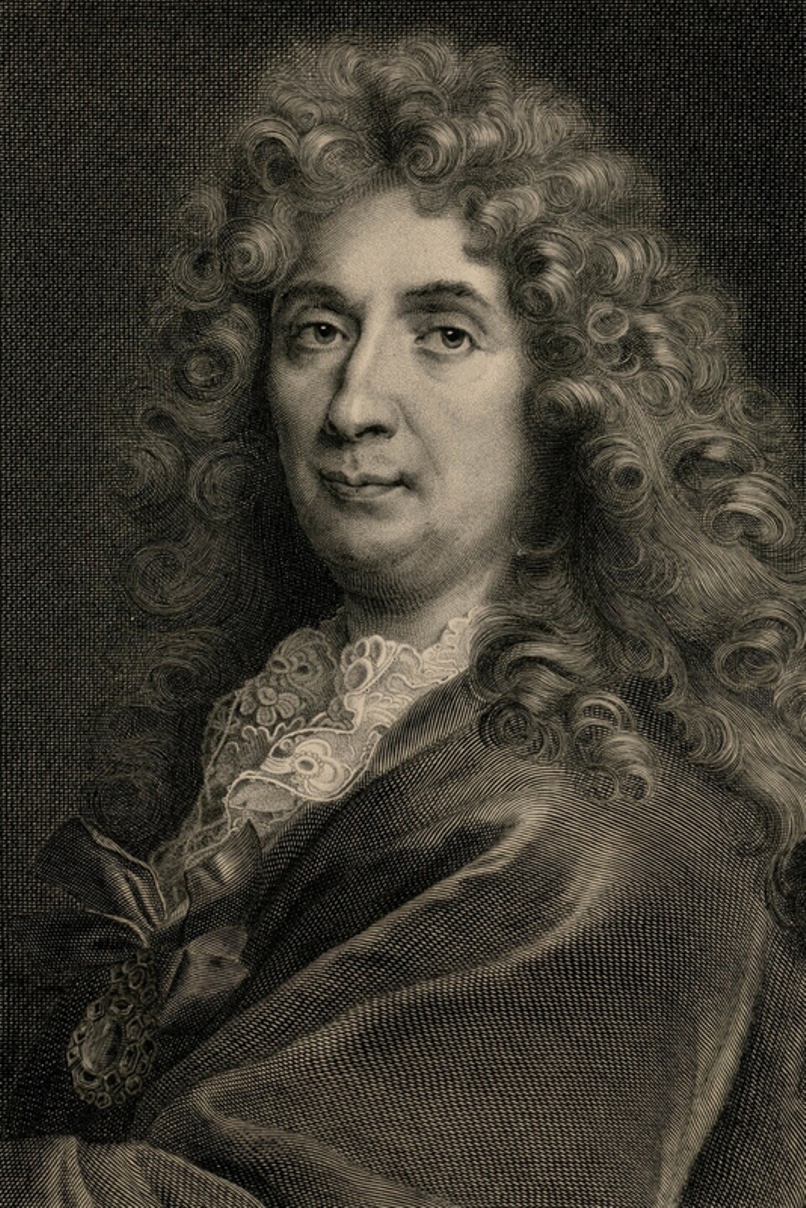
Charles Le Brun was a French painter, draftsman and chief decorator of the Palace of Versailles.
Charles came from an educated and respected family, trained in painting in Italy and very soon his talents were appreciated in the highest circles of France. In 1660 Le Brun painted "The Family of Darius before Alexander", which brought him the reputation of a brilliant French painter, and in 1664 he received the position of the first painter of the king. Thereafter he received more and more commissions and more honors.
From 1662 Le Brun controlled all the artistic projects of the royal court. In the Palace of Versailles, Lebrun created beautiful decorations: the Ambassadors' Staircase, the Hall of Mirrors, the Peace Room and the War Room. In each of his designs, he emphasized the king's achievements. He was also responsible for the decoration of the State Apartments, which was entrusted to the greatest artists of the time, who worked from his drawings. Le Brun also designed most of the statues in the park at Versailles. This enormous work cemented his reputation as a true seventeenth-century genius, as well as one of the founders, ideologues, and chief representatives of the classicist "grand style" of King Louis XIV's era.
In 1648 Le Brun became a founding member of the Royal Academy of Painting and Sculpture, and in 1663 - the manager of the Manufacture of tapestries.
Charles Le Brun was not only the creator of the "grand style", but also contributed to the rebirth of classicism into academism.

Charles Le Brun was a French painter, draftsman and chief decorator of the Palace of Versailles.
Charles came from an educated and respected family, trained in painting in Italy and very soon his talents were appreciated in the highest circles of France. In 1660 Le Brun painted "The Family of Darius before Alexander", which brought him the reputation of a brilliant French painter, and in 1664 he received the position of the first painter of the king. Thereafter he received more and more commissions and more honors.
From 1662 Le Brun controlled all the artistic projects of the royal court. In the Palace of Versailles, Lebrun created beautiful decorations: the Ambassadors' Staircase, the Hall of Mirrors, the Peace Room and the War Room. In each of his designs, he emphasized the king's achievements. He was also responsible for the decoration of the State Apartments, which was entrusted to the greatest artists of the time, who worked from his drawings. Le Brun also designed most of the statues in the park at Versailles. This enormous work cemented his reputation as a true seventeenth-century genius, as well as one of the founders, ideologues, and chief representatives of the classicist "grand style" of King Louis XIV's era.
In 1648 Le Brun became a founding member of the Royal Academy of Painting and Sculpture, and in 1663 - the manager of the Manufacture of tapestries.
Charles Le Brun was not only the creator of the "grand style", but also contributed to the rebirth of classicism into academism.

François Boucher, a French artist, is celebrated for his significant contributions to the Rococo style of painting. His works are renowned for their idyllic and voluptuous themes, which include classical subjects, decorative allegories, and pastoral scenes. Boucher's talent in creating intricate and charming paintings made him a favorite in the French court, especially with Madame de Pompadour.
François Boucher's skills were not confined to painting alone; he was also an adept draftsman and tapestry designer. His designs for the Beauvais tapestry workshops were highly successful, influencing decorative arts across Europe. Moreover, Boucher's influence extended to porcelain, with his designs being replicated on tableware and decorative pieces at the Vincennes and Sèvres factories.
Despite the later criticism of his style as overly frivolous and disconnected from the emerging Neoclassical trends, François Boucher's works continue to be admired for their aesthetic beauty and historical significance. His ability to blend various elements into a cohesive and appealing visual narrative demonstrates his mastery and enduring legacy in the art world.
For art collectors and enthusiasts, François Boucher's oeuvre offers a fascinating glimpse into 18th-century French art and culture, reflecting the opulence and delicate tastes of the Rococo period. His paintings and designs continue to be celebrated and studied for their artistic merit and historical context.
To stay updated on the latest exhibitions, sales, and events related to François Boucher's works, consider subscribing to updates from reliable art and antique sources. This way, you'll remain informed about opportunities to engage with the art of one of Rococo's most distinguished masters.

Charles-André Van Loo, a celebrated French painter, remains an iconic figure in the world of art and culture. Born in 1705 in Nice, then part of the Duchy of Savoy, Van Loo's journey in art began under the tutelage of Benedetto Luti and Pierre Le Gros in Rome. His skills were honed further at the Académie Royale in Paris, where he achieved first prize for drawing in 1723 and for historical painting in 1727. This early success, crowned with the prestigious Prix de Rome, marked the onset of a flourishing career.
Charles-André Van Loo's work, characterized by simplicity of style and correctness of design, was greatly influenced by the great Italian masters. This influence played a significant role in refining the modern French school of painting. His oeuvre encompassed various genres, including religion, history, mythology, and portraiture, showcasing his versatility. He gained the patronage of the French court, notably Madame de Pompadour, and was honored with the Order of Saint Michael. In 1762, his exceptional talent led to his appointment as the First Painter to King Louis XV of France.
Among his notable works, "The Marriage of the Virgin" finds a prestigious place in the Louvre, Paris. His paintings are also displayed in other renowned institutions, such as the Legion of Honor in San Francisco, which houses his works from 1752-1753, including "Painting," "Architecture," "Sculpture," and "Music." Additionally, his portraits of European royalty and prominent figures, like Empress Elizabeth Petrovna and Madame de Pompadour, further cemented his legacy.
Despite his success, Charles-André Van Loo's critical reception has varied over the centuries. While his ability and the quality of his work are still admired, the excessive praise once bestowed upon his creations is now deemed disproportionate. Nonetheless, his contributions to the art world are undeniable.
For collectors and experts in art and antiques, Van Loo's work offers a window into the elegance and sophistication of 18th-century Rococo art. His paintings not only depict the artistic preferences of his era but also provide insights into the cultural and social milieu of the French court.
To stay updated on new product sales and auction events related to Charles-André Van Loo, sign up for our updates. This subscription is your gateway to the world of this illustrious artist, ensuring you never miss an opportunity to explore and acquire pieces linked to his legacy.
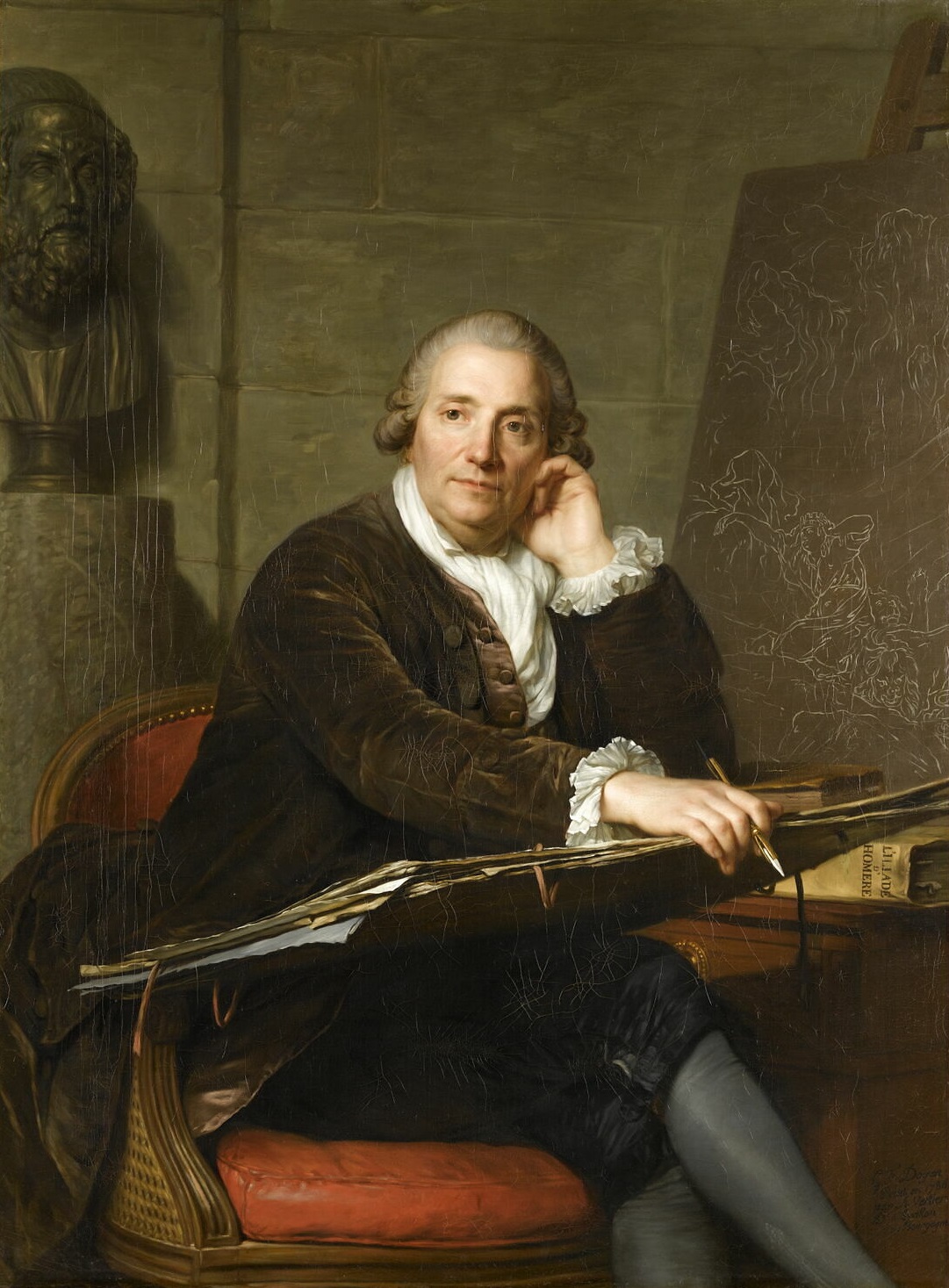
Gabriel-François Doyen was a French painter who was born in Paris.
He became an artist against his father's wishes, becoming a pupil at the age of twelve of Charles-André van Loo. Making rapid progress, he obtained at twenty the Grand Prix de Rome, and in 1748 set out for Rome. He studied the works of Annibale Carracci, Pietro Berrettini da Cortona, Giulio Romano and Michelangelo, then visited Naples, Bologna and, crucially, Venice. While in the latter city Doyen was greatly influenced by the work of the famous colourists, such as Titian.

Jean-Honoré Fragonard, a prominent French Rococo painter, left an indelible mark on the art world with his vivacious and hedonistic approach to painting. Born in Grasse, France, in 1732, Fragonard's journey into the art world was marked by his early apprenticeship under François Boucher, whose influence is evident in the young artist's work. Fragonard's talent and skill were recognized early on when he won the prestigious Prix de Rome in 1752, which allowed him to study at the French Academy in Rome.
Jean-Honoré Fragonard's work is characterized by a remarkable facility, exuberance, and a penchant for themes of love and voluptuousness that resonated with the opulent and pleasure-seeking milieu of Louis XV's court. His paintings, such as "The Swing" (Wallace Collection), "Blind Man's Bluff," and "The Bolt," are celebrated for their tender beauty, vibrant color, and the virtuosity of his brushwork. These works encapsulate the essence of Rococo art with their playful themes, intricate compositions, and luminous palette.
Despite the initial success and the king's patronage, which saw his piece "Coresus et Callirhoe" being bought and reproduced at the Gobelins factory, Jean-Honoré Fragonard's career took a turn as the French Revolution upended the social order and the artist's private patrons were guillotined or exiled. This period forced Fragonard to leave Paris, seeking refuge in Grasse. He returned to the capital in the early 19th century, where he died in 1806, almost forgotten. It wasn't until the late 19th and early 20th centuries that Fragonard's work was re-evaluated, cementing his position among the masters of French painting. His influence on the Impressionists, particularly Renoir and his grandniece Berthe Morisot, is undeniable, showcasing his lasting impact on the trajectory of art history.
For collectors and experts in art and antiques, Jean-Honoré Fragonard's oeuvre represents the pinnacle of Rococo art, offering a glimpse into the opulent and sensuous world of 18th-century France. His paintings are not just artistic achievements but are also historical documents that reflect the cultural and social dynamics of his time.
To stay updated on new discoveries, sales, and auction events related to Jean-Honoré Fragonard's works, signing up for updates is recommended. This ensures that enthusiasts and collectors are promptly informed about opportunities to enrich their collections with the exquisite beauty of Fragonard's art.

Charles-André Van Loo, a celebrated French painter, remains an iconic figure in the world of art and culture. Born in 1705 in Nice, then part of the Duchy of Savoy, Van Loo's journey in art began under the tutelage of Benedetto Luti and Pierre Le Gros in Rome. His skills were honed further at the Académie Royale in Paris, where he achieved first prize for drawing in 1723 and for historical painting in 1727. This early success, crowned with the prestigious Prix de Rome, marked the onset of a flourishing career.
Charles-André Van Loo's work, characterized by simplicity of style and correctness of design, was greatly influenced by the great Italian masters. This influence played a significant role in refining the modern French school of painting. His oeuvre encompassed various genres, including religion, history, mythology, and portraiture, showcasing his versatility. He gained the patronage of the French court, notably Madame de Pompadour, and was honored with the Order of Saint Michael. In 1762, his exceptional talent led to his appointment as the First Painter to King Louis XV of France.
Among his notable works, "The Marriage of the Virgin" finds a prestigious place in the Louvre, Paris. His paintings are also displayed in other renowned institutions, such as the Legion of Honor in San Francisco, which houses his works from 1752-1753, including "Painting," "Architecture," "Sculpture," and "Music." Additionally, his portraits of European royalty and prominent figures, like Empress Elizabeth Petrovna and Madame de Pompadour, further cemented his legacy.
Despite his success, Charles-André Van Loo's critical reception has varied over the centuries. While his ability and the quality of his work are still admired, the excessive praise once bestowed upon his creations is now deemed disproportionate. Nonetheless, his contributions to the art world are undeniable.
For collectors and experts in art and antiques, Van Loo's work offers a window into the elegance and sophistication of 18th-century Rococo art. His paintings not only depict the artistic preferences of his era but also provide insights into the cultural and social milieu of the French court.
To stay updated on new product sales and auction events related to Charles-André Van Loo, sign up for our updates. This subscription is your gateway to the world of this illustrious artist, ensuring you never miss an opportunity to explore and acquire pieces linked to his legacy.

François Boucher, a French artist, is celebrated for his significant contributions to the Rococo style of painting. His works are renowned for their idyllic and voluptuous themes, which include classical subjects, decorative allegories, and pastoral scenes. Boucher's talent in creating intricate and charming paintings made him a favorite in the French court, especially with Madame de Pompadour.
François Boucher's skills were not confined to painting alone; he was also an adept draftsman and tapestry designer. His designs for the Beauvais tapestry workshops were highly successful, influencing decorative arts across Europe. Moreover, Boucher's influence extended to porcelain, with his designs being replicated on tableware and decorative pieces at the Vincennes and Sèvres factories.
Despite the later criticism of his style as overly frivolous and disconnected from the emerging Neoclassical trends, François Boucher's works continue to be admired for their aesthetic beauty and historical significance. His ability to blend various elements into a cohesive and appealing visual narrative demonstrates his mastery and enduring legacy in the art world.
For art collectors and enthusiasts, François Boucher's oeuvre offers a fascinating glimpse into 18th-century French art and culture, reflecting the opulence and delicate tastes of the Rococo period. His paintings and designs continue to be celebrated and studied for their artistic merit and historical context.
To stay updated on the latest exhibitions, sales, and events related to François Boucher's works, consider subscribing to updates from reliable art and antique sources. This way, you'll remain informed about opportunities to engage with the art of one of Rococo's most distinguished masters.












